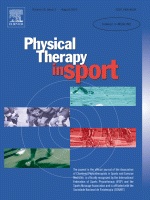
FOOT & ANKLE
Chronic ankle instability: HVLA Vs. weight-bearing mobilization for dorsiflexion
This report has been verified
by one or more authors of the
original publication.
Phys Ther Sport. 2015 Feb;16(1):10-5.
Fifty two patients with chronic ankle instability were randomized to one of three groups, weight-bearing mobilization with movement (WB-MWM), high velocity and low amplitude manipulation (HVLA) of the talocrural joint, or a placebo group. The purpose of the study was to compare the two manual therapy techniques with respect to ankle dorsiflexion improvement immediately following treatment, and at several time points up to 48 hours. Both WB-MWM and HVLA groups indicated significant improvements over time and when compared to the control group, but no significant difference was observed between the two manual therapy groups.
Unlock the full ACE Report
You have access to {0} free articles per month.Click below to unlock and view this {1}
Unlock NowCritical appraisals of the latest, high-impact randomized controlled trials and systematic reviews in orthopaedics
Access to OrthoEvidence podcast content, including collaborations with the Journal of Bone and Joint Surgery, interviews with internationally recognized surgeons, and roundtable discussions on orthopaedic news and topics
Subscription to The Pulse, a twice-weekly evidence-based newsletter designed to help you make better clinical decisions
Exclusive access to original content articles, including in-house systematic reviews, and articles on health research methods and hot orthopaedic topics
Or upgrade today and gain access to all OrthoEvidence content for just $1.99 per week.
Already have an account? Log in


Subscribe to "The Pulse"
Evidence-Based Orthopaedics direct to your inbox.
{0} of {1} free articles
Become an OrthoEvidence Premium Member. Expand your perspective with high-quality evidence.
Upgrade Now













































































